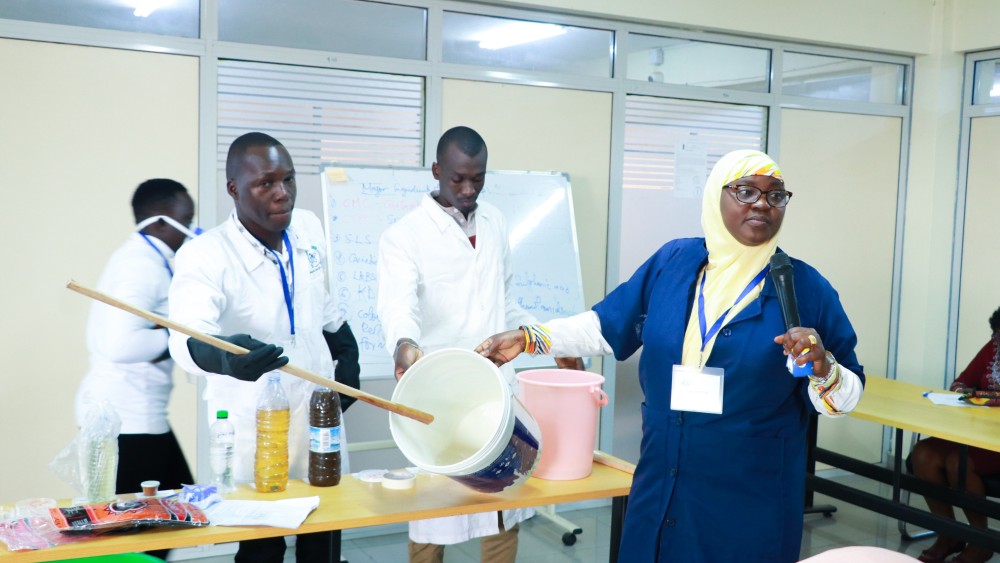
Jul
CoEEI Holds Hands-on Training on Liquid Dishwash Production
July 24, 2024, 3:55 pm
| Title: | Impact of Marketing Tactics on the Performance of Oyster Mushroom Cultivation among Small-Scale Farmers: A Study in Mumias Division, Mumias Sub-County, Kenya |
| Author(s): | Andrew, O. Nyakundi |
| Year | 2023 |
| Publisher: | INOSR ARTS AND HUMANITIES |
| URI: | https://publications.kiu.ac.ug/publication-page.php?i=impact-of-marketing-tactics-on-the-performance-of-oyster-mushroom-cultivation-among-small-scale-farmers-a-study-in-mumias-division-mumias-sub-county-kenya |
| File: | |
| Keywords: | Mushroom Oyster production marketing strategy |
Mushrooms, as macro-fungi capable of thriving above and below ground, are a rich source of
nutrients and can be successfully cultivated within well-ventilated structures using organic
substrates. China is the global leader in Oyster mushroom production, accounting for 80% of the
total output, with Africa contributing relatively little. In Kenya, two mushroom species are grown:
Button and Oyster, with a combined annual production of 500 tons and an additional 150 tons
imported. Button mushrooms dominate production at 95%, while Oyster mushrooms represent
only 5% of the total output. Among farmers, the majority (80%) focus on cultivating Oyster
mushrooms, while the remaining 20% prefer Button mushrooms. Despite the availability of
suitable substrates and the preference of growers, the performance of Oyster mushroom
cultivation has remained suboptimal. Consequently, the impact of marketing strategies on Oyster
mushroom performance has remained uncertain. This study aimed to investigate the influence of
marketing strategies employed by farmers. The research was grounded in Innovation theory and
guided by a conceptual framework. A descriptive research design was adopted, with a study
population of 300 individuals, and a random sample of 30 respondents was selected using
cluster random sampling. Data were collected through questionnaires and interview guides and
analyzed using SPSS. The results revealed that 56.7% of the farmers sold mushrooms in rural
open markets, while 43.3% supplied their produce to hotels and restaurants. Furthermore, 53.3%
of farmers engaged in personal selling, whereas 46.7% relied on vendors for distribution. In
terms of sales, 76.7% marketed mushrooms through their respective groups, while 6.7% used
retailers. Regarding packaging, 96.7% of farmers utilized polythene bags, with a small proportion
(3.3%) opting for bottles. On pricing, 70% sold 50gm packages for Ksh 100, while the remaining
30% offered 1kg packages priced at Kshs 2000. A significant majority (83.3%) of farmers sold
processed mushrooms, while 16.7% focused on fresh mushrooms. In conclusion, the study found
that existing marketing strategies had a limited impact on the performance of Oyster mushroom
cultivation. The study recommends intensive training, the development of incentive schemes, the
construction of cold storage facilities, and the formation of mushroom cooperatives to enhance
the industry's performance. The findings of this research have implications for policymakers,
mushroom growers, scholars, and researchers in the field

Kampala International University,
Box 20000, Ggaba Road, Kansanga, Kampala